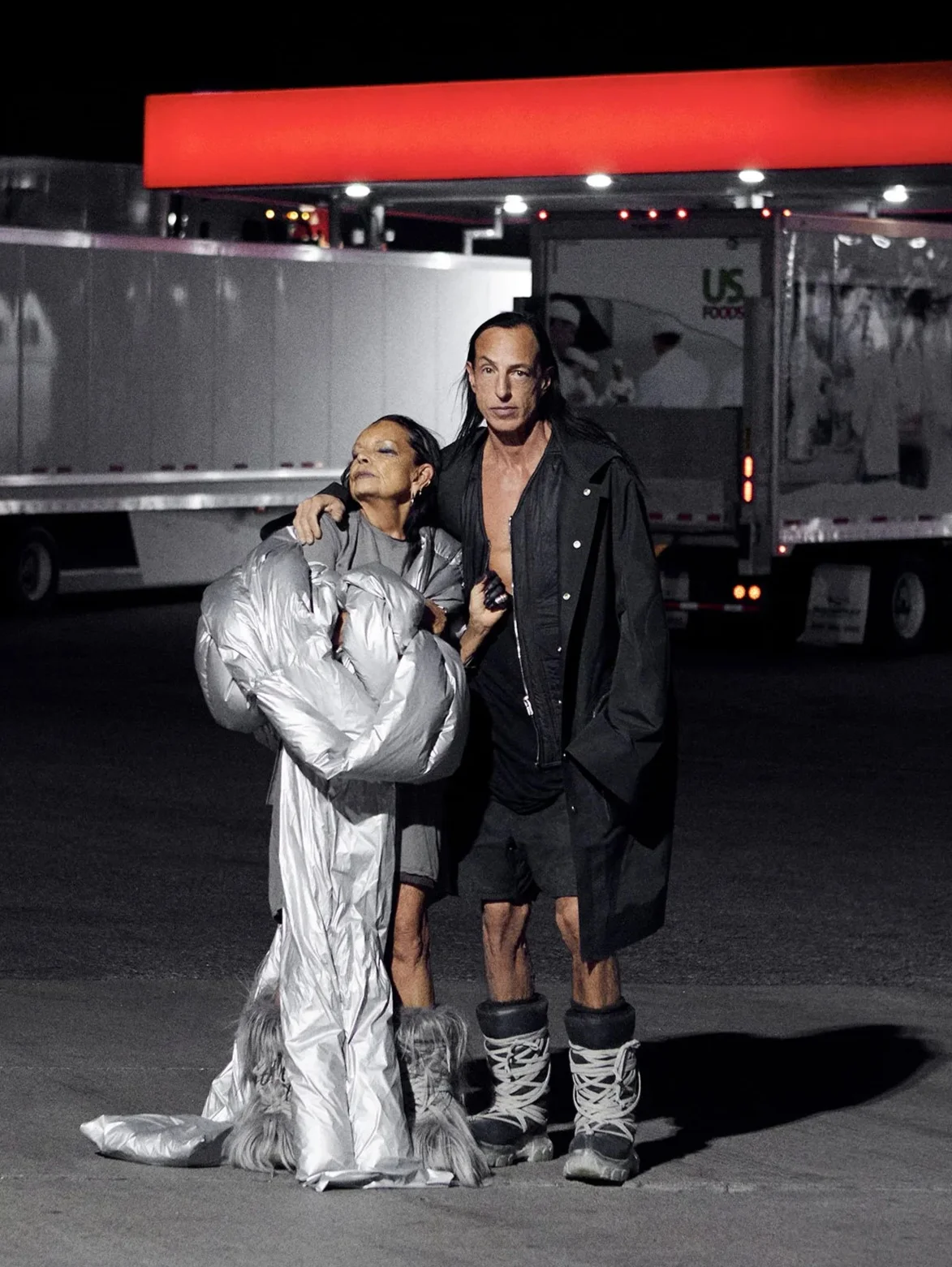Rick Owens has turned his darkly glamorous, post-apocalyptic take on gothic grunge into a globally-renowned fashion business.
Rick Owens was raised in Porterville, California. His parents are John (d. 2015) and Concepción « Connie » Owens. Connie is Mexican. Owens was raised in a conservative, Catholic household. After graduating high school, he moved to Los Angeles to study art at Otis College of Art and Design for two years before taking pattern-making and draping courses at Los Angeles Trade-Technical College. This led to work in the garment industry, designing copies of designer clothing.
Owens himself described his start in fashion this way:
“I had always lived in Southern California. I grew up in Porterville, which is next to Bakersfield. I went to L.A. to go to college at Parsons, but I didn’t graduate. I was an art school dropout. I studied fine arts there for two years, but it was too expensive and I didn’t really see a job ahead, a real job. So I went to a two-year program at a trade college learning how to pattern-make with all these Korean ladies—not glamorous. I didn’t grow up in the industry, like Marc Jacobs at Halston. I ended up working for knock-off companies in L.A. I just knocked off patterns for years.”
His muse: Michelle Lamy

No profile of Rick Owens would be complete without discussing his relationship with his wife, collaborator and muse, Michèle Lamy.
The two met in the late ’80s through Owens’ then-boyfriend when she hired him as a pattern-maker for her own line, Lamy. Predating his own brand, he began working on the design team for the Lamy brand in 1990. Owens said. ‘It’s just the whole idea of excess and the phrase ‘A candle that burns at both ends might burn shorter, but it burns brighter.’
At the time she was living in Los Angeles and running Les Deux Café, one of Hollywood’s true insider spots, located behind an unmarked door in a car park. Owens worked for two years at Lamy’s company before they began an affair. Owens ended up leaving his boyfriend and Lamy left her husband, Richard Newton.
Rick Owens started out wanting to have a small, comfortable business, but he also wanted to be sold in the most reputable stores that would best suit his products. So he began working with a store.
In 1994, Rick began his own label selling exclusively to Charles Gallay. Gallay operated what was the most avant garde boutique in L.A. at the time, becoming the first in the city to carry Versace, Mugler and Margiela. Rick commented on Gallay saying, « He was the biggest buyer in the world of Margiela’s first season. I showed my clothes to him first. He bought them. And he prepaid. »`
The rise
Owens broke into the highest echelons of the industry after French Vogue ran an image of Kate Moss wearing one of his leather jackets. Owens was able to utilise the momentum with assistance from Anna Wintour and American Vogue, and the publication sponsored his first show at New York Fashion Week’s Spring/Summer 2002 season. He also began his longstanding collaboration with stylist Panos Yiapanis in 2001 who, to date, has worked on every single one of Owens’ presentations.
While Owens’ runway collections have earned him justified fame among fans and casual followers alike, its his footwear that has added to his wider cultural appeal. One of his most iconic pieces—the Dustulator Dunk —began what would become a series of highly coveted (and highly controversial) Rick Owens sneakers.
The SUBHUMAN INHUMAN SUPERHUMAN show
Rick Owens remains among the most radical and discussed figures of contemporary fashion. His work is persistent, innovative, iconoclastic and unpredictable, all translated and rendered tangible through shapes, volumes and contemporary materials saturated with primal echoes, deliberately misaligned and deconstructed:
“I am hesitant to define what I do as art. I think in three dimensions, so this has a lot to do with the construction, and less with the styling, let’s say it’s much more similar to sculpture, but I do not want to call it art … ” .
With these words, the introverted designer seems to taunt, clearly defining his particular approach to design. His work desires above all to escape the excessive clamor of the mainstream with a refined yet complex aesthetic message, deliberately both critical and free of banal commercial logistics of conventional fashion. Here, goth and grunge elements act as a connective tissue of an unequivocal aesthetic grid.
And at the heart of the Triennale exhibit, a three-dimensional, colossal, material on-site installation became a giant essence meant to continuously underline the glam, grunge and radical elements of its creator – a figure for whom the term “glunge” was specifically coined.

Laisser un commentaire